Underwater Wonders:The Vibrant World of Nudibranchs
Story and Pictures by Thom Robbins
In the Pacific Northwest, divers can't help but talk about nudibranchs. With their brilliant colors and unique patterns, these vibrant sea slugs captivate divers and underwater photographers alike. Despite their small size, nudibranchs' diversity, intriguing behaviors, and ecological significance make every encounter unique. Observing their feeding habits or marveling at their colors and patterns turns an ordinary dive into an extraordinary experience. It's no wonder dive enthusiasts travel from around the world to places like the Salish Sea to see these mesmerizing creatures.
How to pronounce “Nudibranch”
The word nudibranch is pronounced “Noo-de-brank”, with the ‘ch’ making a ‘k’ sound. The name nudibranch comes from Latin and Greek. “Nudi” means naked in Latin, and “Brankia” means gills in Greek. This name suits them well since their gills are exposed on their backs.
Nudibranchs, or sea slugs, are marine gastropod mollusks with unique sensory systems. They belong to the Mollusk family, which includes snails, slugs, and octopuses, and are closely related to land-based slugs and snails. With their dazzling colors and intricate patterns, nudibranchs are some of the ocean's most visually striking creatures. They have long captured the imagination of both scientists and divers. With about 3,000 known species of nudibranchs worldwide, scientists believe many more remain undiscovered. Approximately 300 species have been documented in the Salish Sea. With their extraordinary colors and behaviors, nudibranchs are a fantastic example of evolution and still hold many mysteries.
Nudibranchs have been known to humans for thousands of years, but scientific classification began in the late 18th and early 19th centuries. The first recorded description was in 1691 by English naturalist John Ray, who described a species of "sea mouse." Recent advances in technology and imaging have made studying nudibranchs easier, revealing new insights into their biology and behavior. High-resolution microscopes and genetic analysis techniques help scientists examine their anatomy and evolutionary history in greater detail.
Nudibranchs are primarily found on the ocean floor, where they gracefully navigate using a broad, flat muscle on their underside called a foot. This muscular foot allows them to glide slowly over the substrate, often at a pace of just a few centimeters per minute. However, some species can swim short distances in the water column by undulating their foot muscle in rhythmic waves. This unique movement, though still relatively slow compared to other marine creatures, adds elegance and adaptability to these fascinating sea slugs as they explore the diverse habitats of the Salish Sea.
Nudibranchs are omnivorous and have oral tentacles near their mouths that act like hands to help them search for food. They also possess a set of curved teeth called a radula, similar to a toothed tongue. The radula allows them to scrape food off surfaces, munching on various organisms, including hydroids, seaweed, corals, algae, barnacles, fish eggs, sponges, anemones, and even other nudibranchs. While some species enjoy a diverse diet, others are picky eaters, consuming only one type of prey. Interestingly, some nudibranchs can even feed on other sea slugs, including those of their species. In this way, nudibranchs play a crucial role in the Salish Sea's food web, helping regulate other organisms' populations.
Nudibranchs have poor vision and can only discern light and dark, so they sense the world through two highly sensitive tentacles called rhinophores on their heads. Unfortunately, these rhinophores tend to stick out and serve as a lure for hungry fish. However, most nudibranchs can withdraw their rhinophores into a receptacle in their skin when they sense danger.
Nudibranchs also have symbiotic relationships with certain organisms in the Salish Sea—for example, some nudibranchs partner with zooxanthellae, a type of algae that lives inside their bodies. The nudibranch provides a safe and protected environment for the algae, and in return, the algae give the nudibranch energy through photosynthesis.
Gallery of nudis
Photos by Thom Robbins
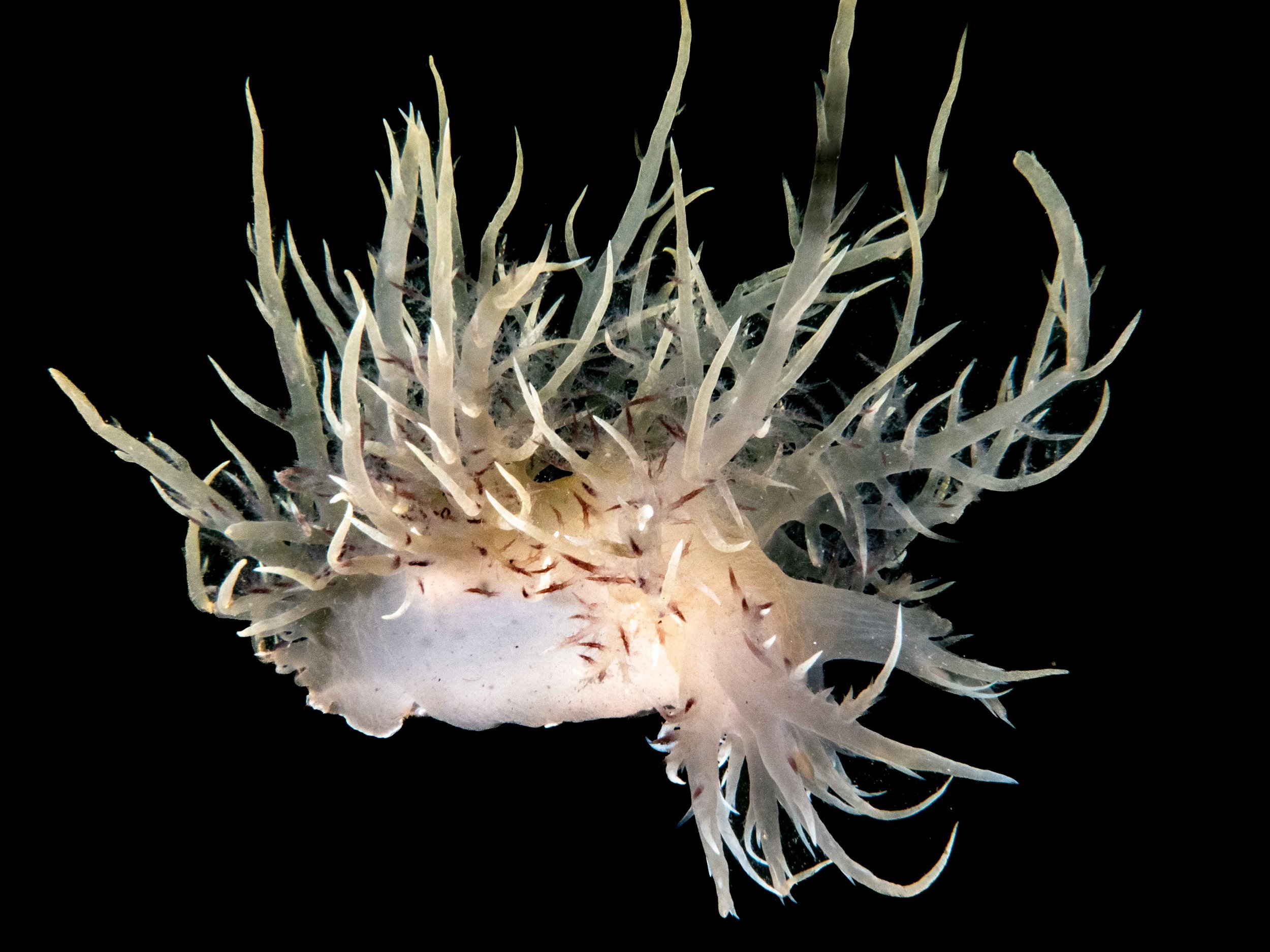
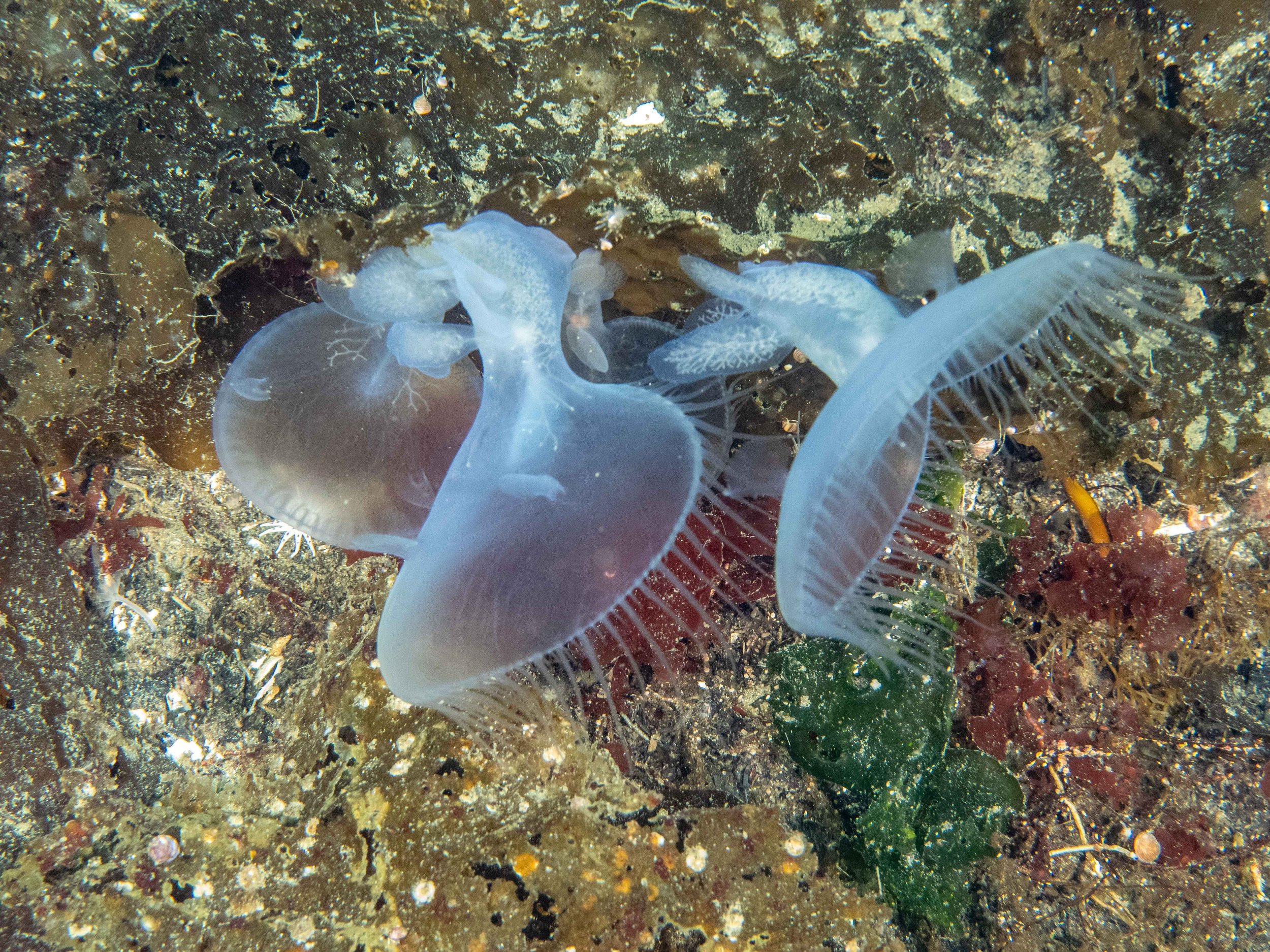

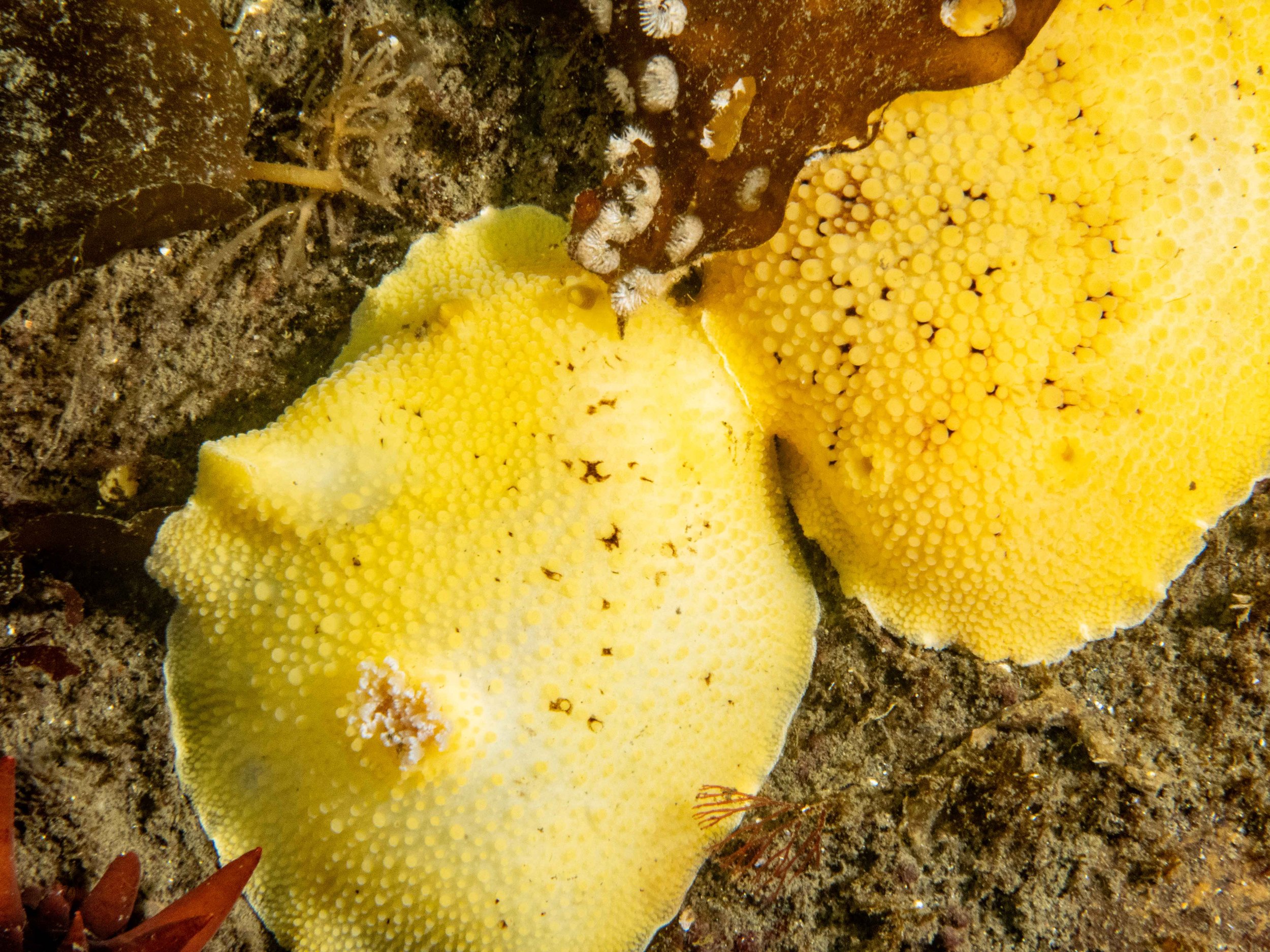
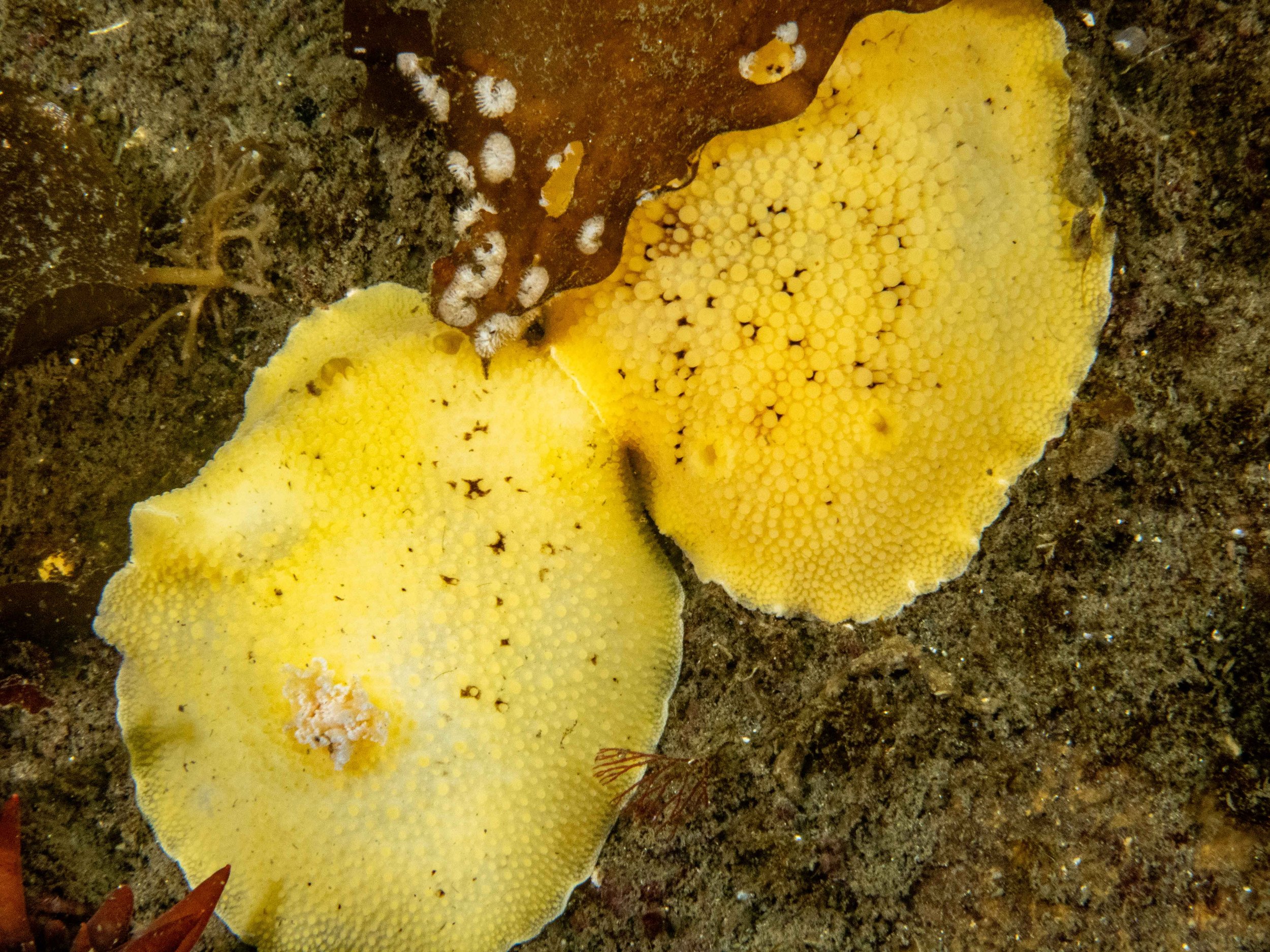
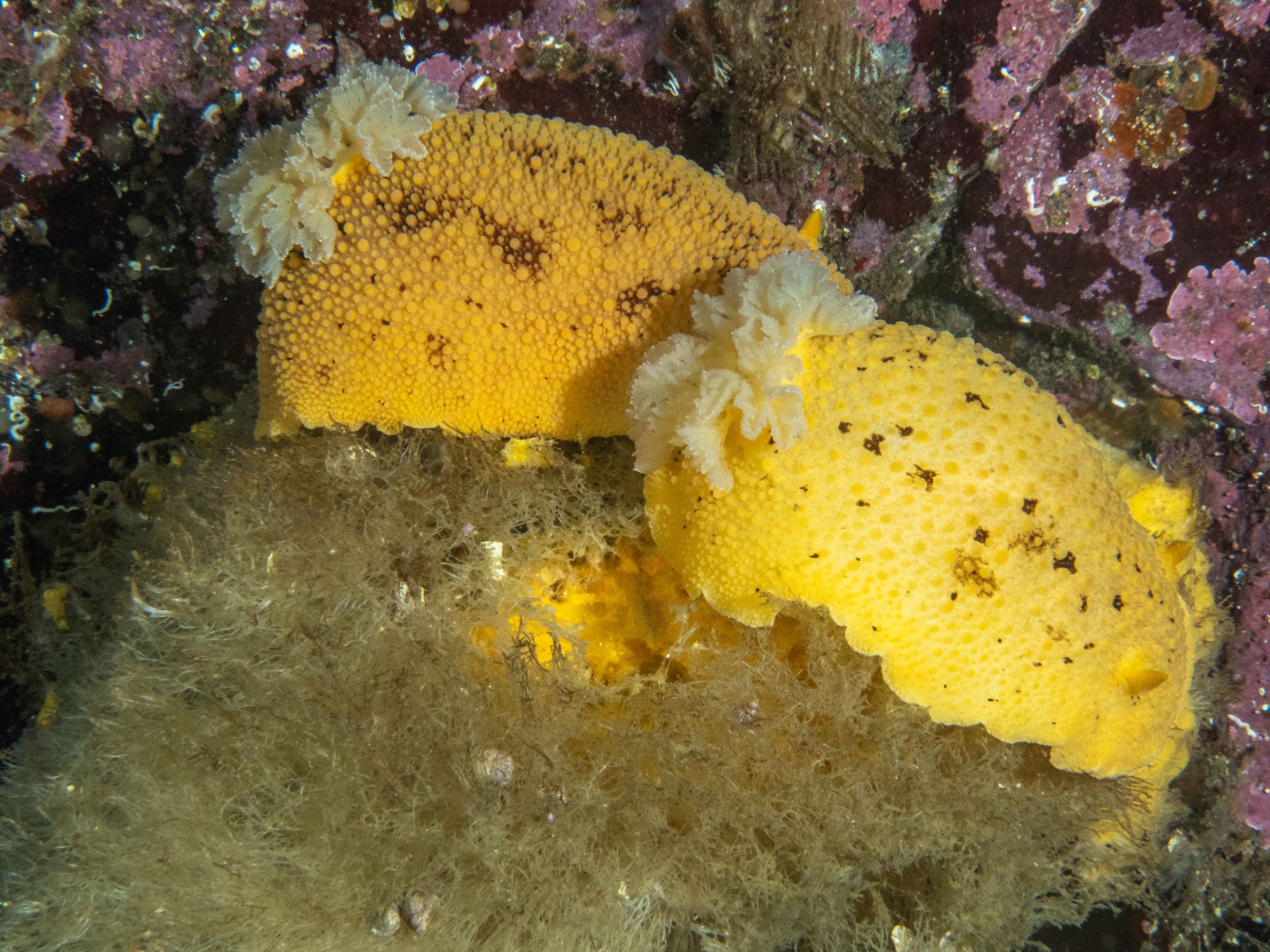

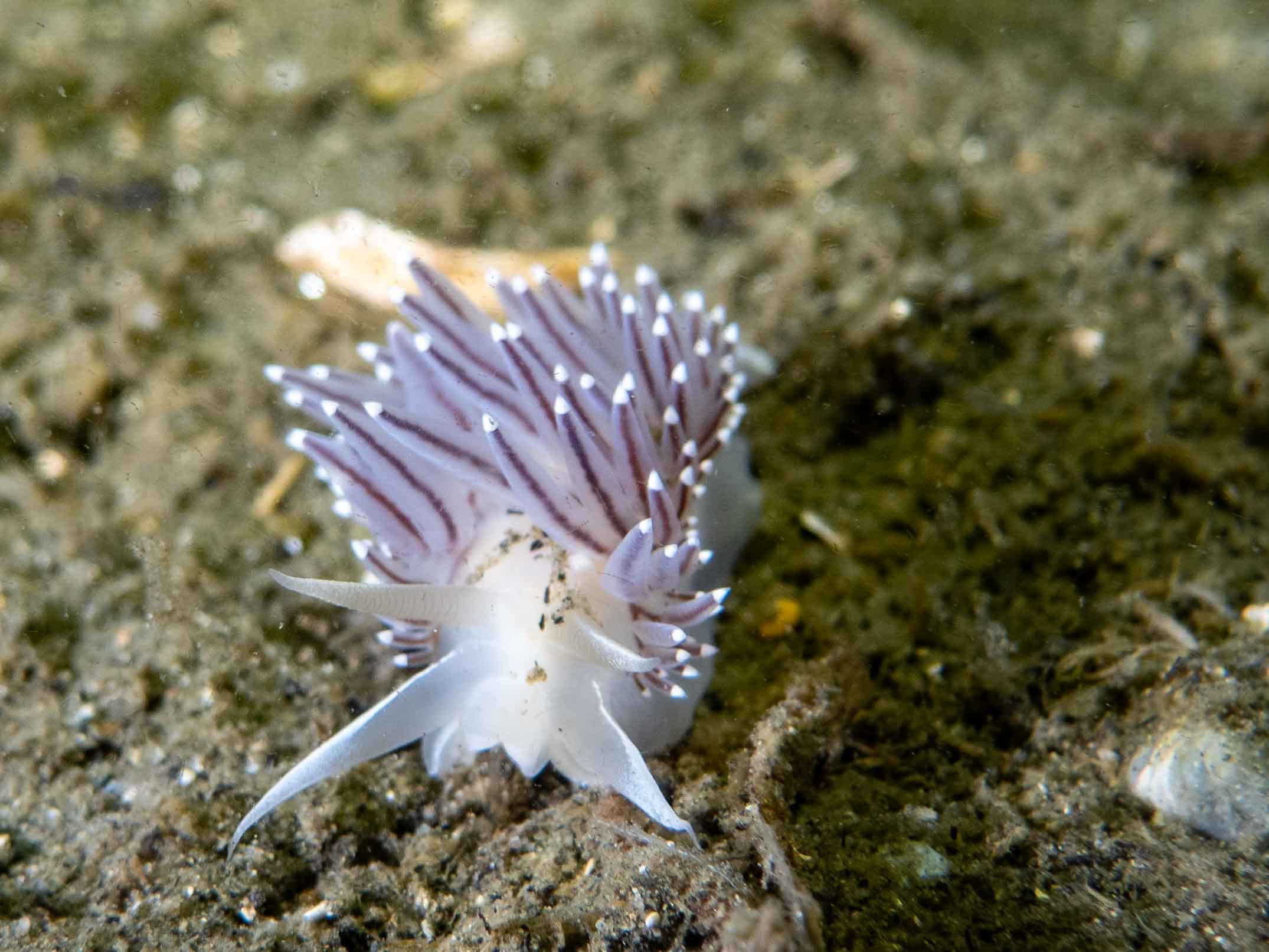
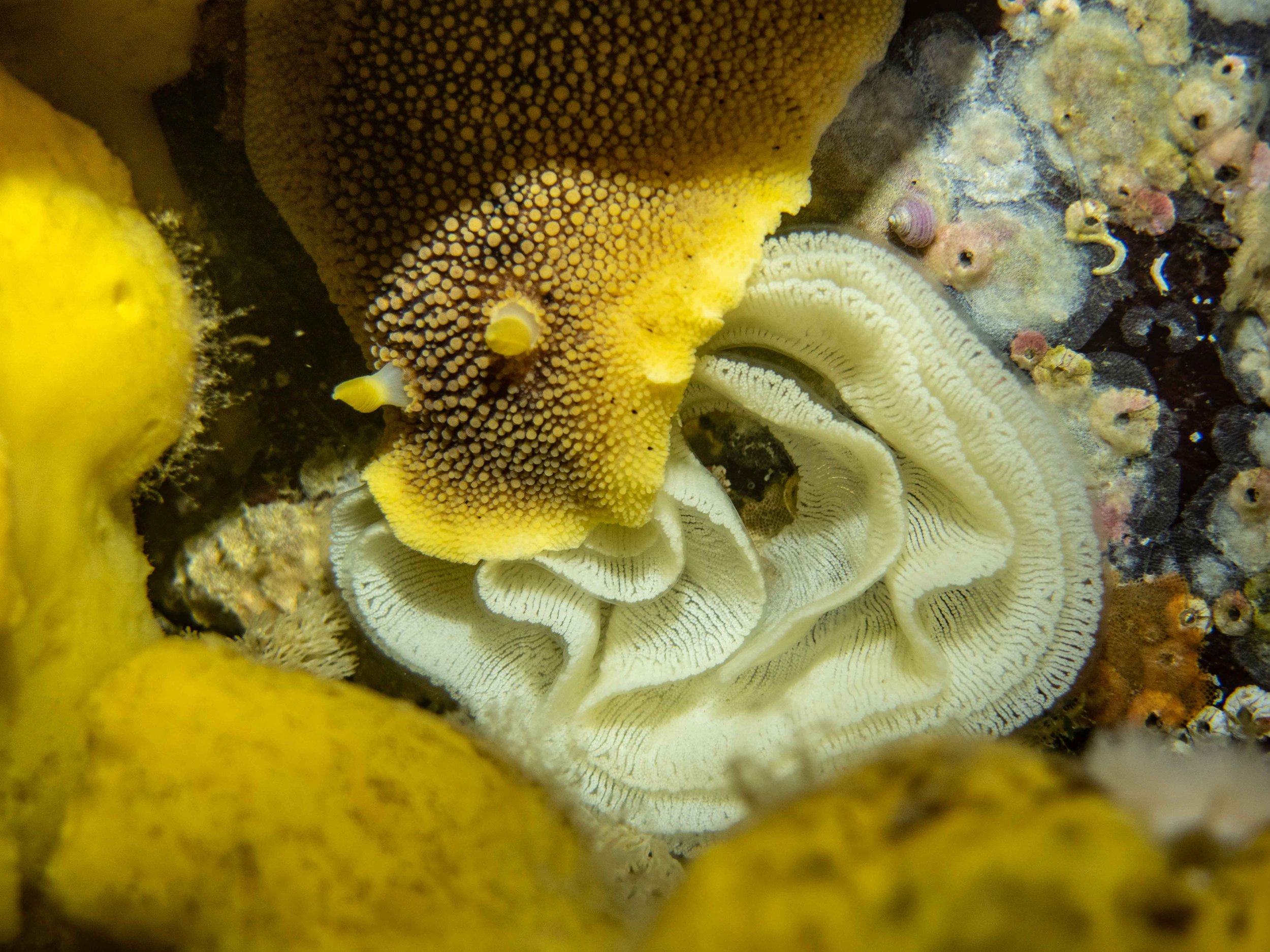
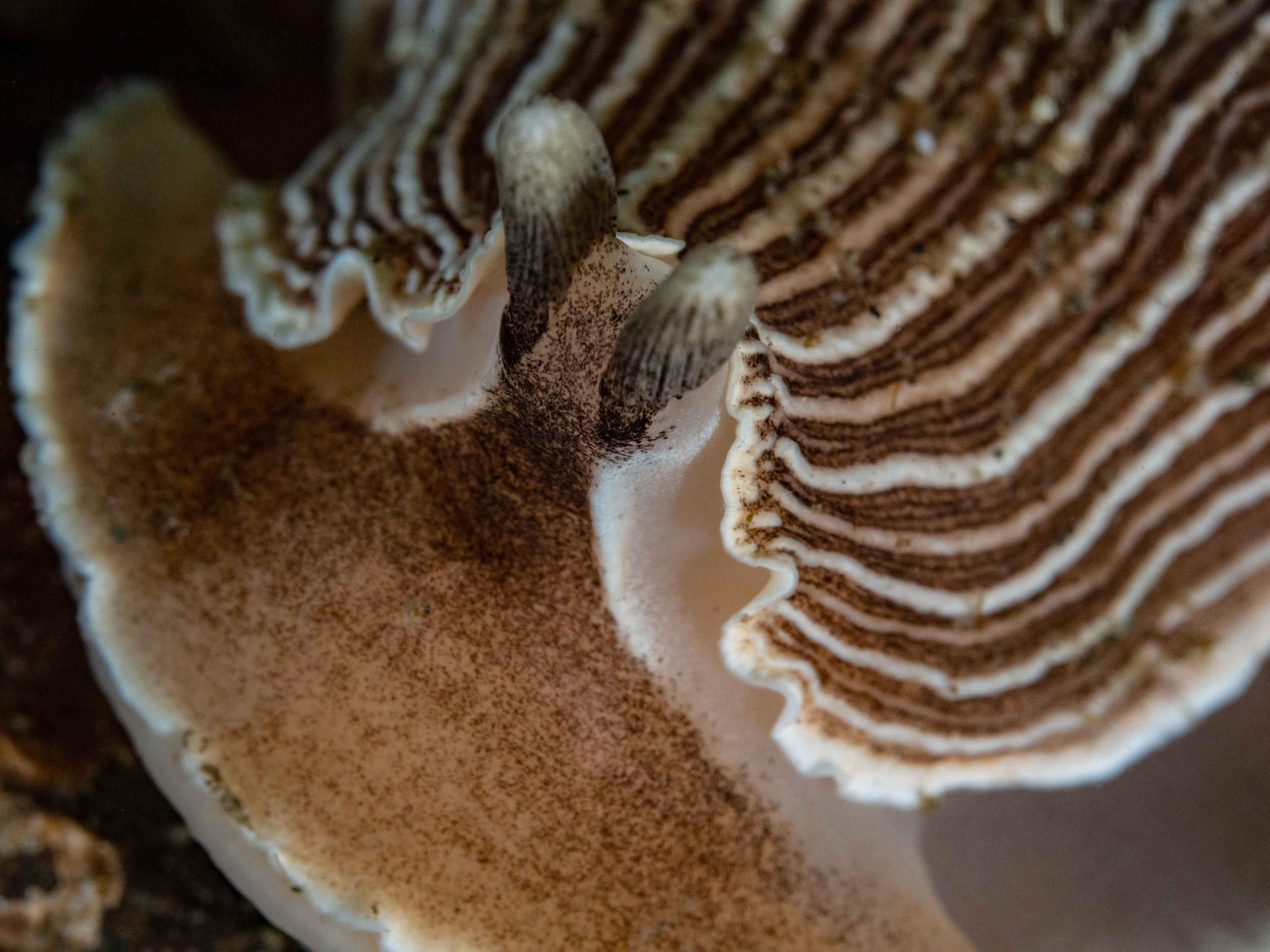

The Lifecycle of a Nudibranch
Nudibranchs are hermaphrodites, possessing both male and female reproductive organs, allowing them to mate with any mature species member. Finding a suitable mate can be challenging as they must locate a partner of appropriate size, age, and species. Although mating is crucial for survival, nudibranch mating behavior is not fully understood.
Since nudibranchs do not roam far and have a short lifespan, ranging from one week to one year, their survival depends on mating whenever the opportunity arises. After a brief courtship, the mating ritual takes only a few minutes. Nudibranchs lay ribbon-like egg masses that hatch into free-swimming larvae, eventually settling on the seafloor as adults.
When two nudibranchs meet, they engage in a mating dance involving various physical interactions, which differ depending on the species.
Several nudibranch species have interesting mating practices and reproductive strategies. For instance, the sea lemon nudibranch is known for its elaborate courtship dances, while the opalescent nudibranch has more solitary and secretive mating habits. The mating process finishes with one nudibranch inserting its penis into the other's genital opening to transfer sperm and fertilize the eggs.
The dance of the sea lemon nudibranch is a captivating display of intricate behaviors. It begins with the nudibranchs detecting chemical signals through their rhinophores and sensory organs. Once a potential mate is identified, they initiate a series of movements and interactions. Sea lemons may swim in circles around each other, using rhythmic body contractions to create water currents.
They align their bodies and exchange tactile touches using oral tentacles and rhinophores, including stroking or tapping each other. These interactions allow them to assess their potential mate's size, texture, and readiness and to exchange chemical cues through skin contact to determine compatibility and reproductive readiness. The sea lemon courtship can last several minutes or even hours. If they find a compatible mate, they align their bodies side by side and mate.
The opalescent nudibranch engages in a mesmerizing courtship behavior known as "chaining" or "following." It begins with one nudibranch following the slime trail left by another. The follower extends its oral tentacles to touch the rear end of the leading nudibranch, triggering a reciprocal response. This back-and-forth interaction can continue for quite some time.
During courtship, they may touch each other with their oral tentacles, antennae, and rhinophores, intertwining their bodies or forming a chain-like structure with multiple individuals. This behavior helps them assess each other's compatibility for mating by exchanging chemical cues through their slime trails, which convey information about reproductive state and readiness. This courtship dance allows them to determine species compatibility, identify potential mates, and ensure successful reproduction.
Nudibranchs also engage in chemical warfare during mating. They can produce and store toxic compounds from their food, such as sponges and algae, in specialized glands in their bodies. These toxins are a defense mechanism against predators and can also repel unwanted mating advances. If a nudibranch is not interested in mating, it can release a cloud of noxious chemicals to discourage further advances.
After mating, nudibranchs lay their eggs in long ribbons or strings sheathed in protective mucus. Although adults don’t care for the eggs, some species cover them with defensive chemicals to deter predators. Family size varies by species, with some laying just a few eggs and others depositing several hundred or even millions. The egg ribbon protects the developing eggs, and nudibranchs often lay them in locations that provide optimal conditions for growth and survival. The eggs hatch into tiny larvae that drift in ocean currents for several weeks before settling on a suitable substrate and developing into adult nudibranchs.
In our area, nudibranch eggs hatch in two ways: as tiny larvae with shells that swim and feed in the plankton or as miniature adults. The swimming larvae, known as veligers, must find the right food before they settle down and grow into small adults. The juvenile nudibranch feeds on tiny organisms like algae and small invertebrates for several weeks. As it grows, it will feed on larger prey such as sponges and hydroids. Nudibranchs have feeding mechanisms that set them apart from other mollusks. They have an oral hood that extends over their mouth, which they use to capture prey. This oral hood contains several rows of sharp teeth that can pierce the prey's outer layer and inject it with digestive enzymes.The time it takes for a nudibranch to grow to maturity can vary depending on the species, but it typically takes several months to a year. When the nudibranch reaches maturity, it begins to search for a mate.
Conclusion
Diving into the waters of tour area transforms the ordinary into extraordinary. As you descend, a serene quietness envelops you, like an explorer charting new frontiers. Camera in hand, navigate this alien landscape, like an astronaut on an oceanic planet. The vastness of the reef invites you to uncover its secrets. Glide along its surface, examine each nook and cranny with curiosity. Vivid marine life enchants, with each nudibranch a brilliant stroke from nature’s palette. In this underwater maze, the adventure takes an exciting turn. A nudibranch appears, its vibrant colors catching your attention. The incredible beauty of these creatures sharpens focus. Point, click, forever preserving your encounter with the dazzling nudibranch.
To learn more about diving locally to see nudibranchs, visit the Sund Rock Marine Preserve, or contact YSS Dive Charters . Both are located near Hoodsport on Hood Canal. You can also often view nudibranchs at very low tides around the docks and piers.
Author: Thom Robbins
Thom has been a diver for over thirty years and is never happier than underwater with his camera. He writes shoots, and teaches diving and photography. Thom lives in Shelton with his wife and mentor, Barb, son and two English Bulldogs. Learn more at thomrobbins.com.


